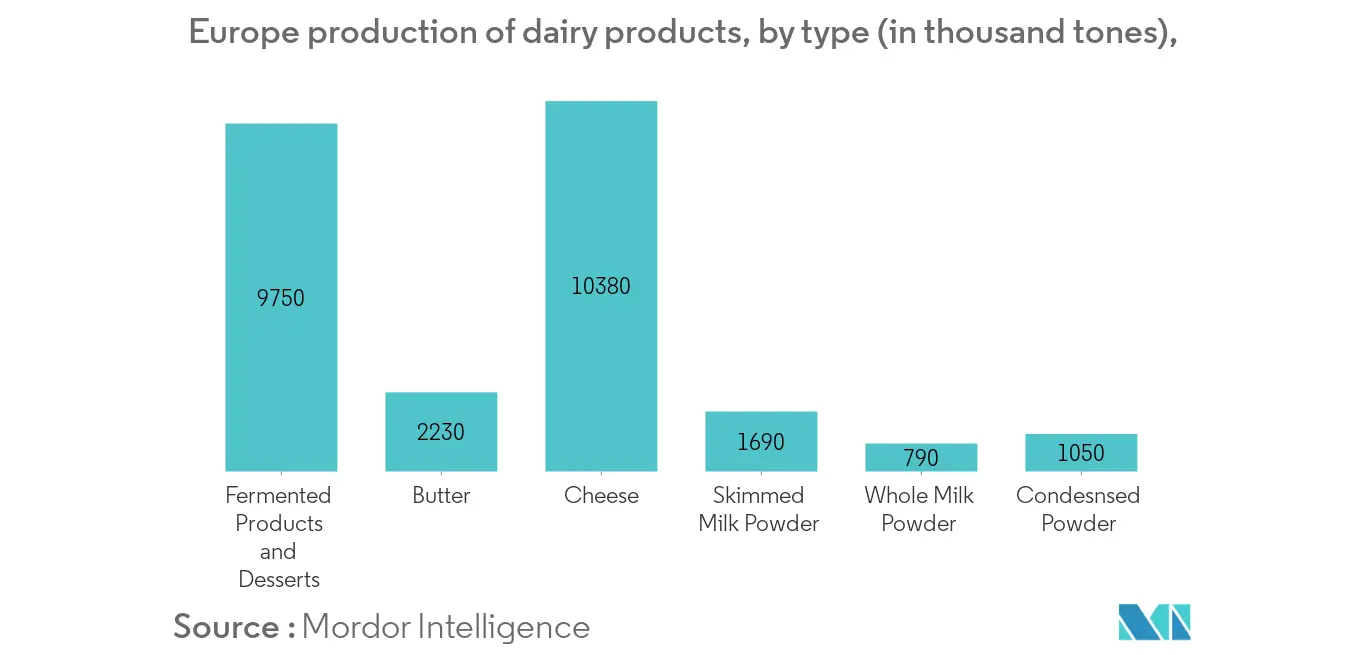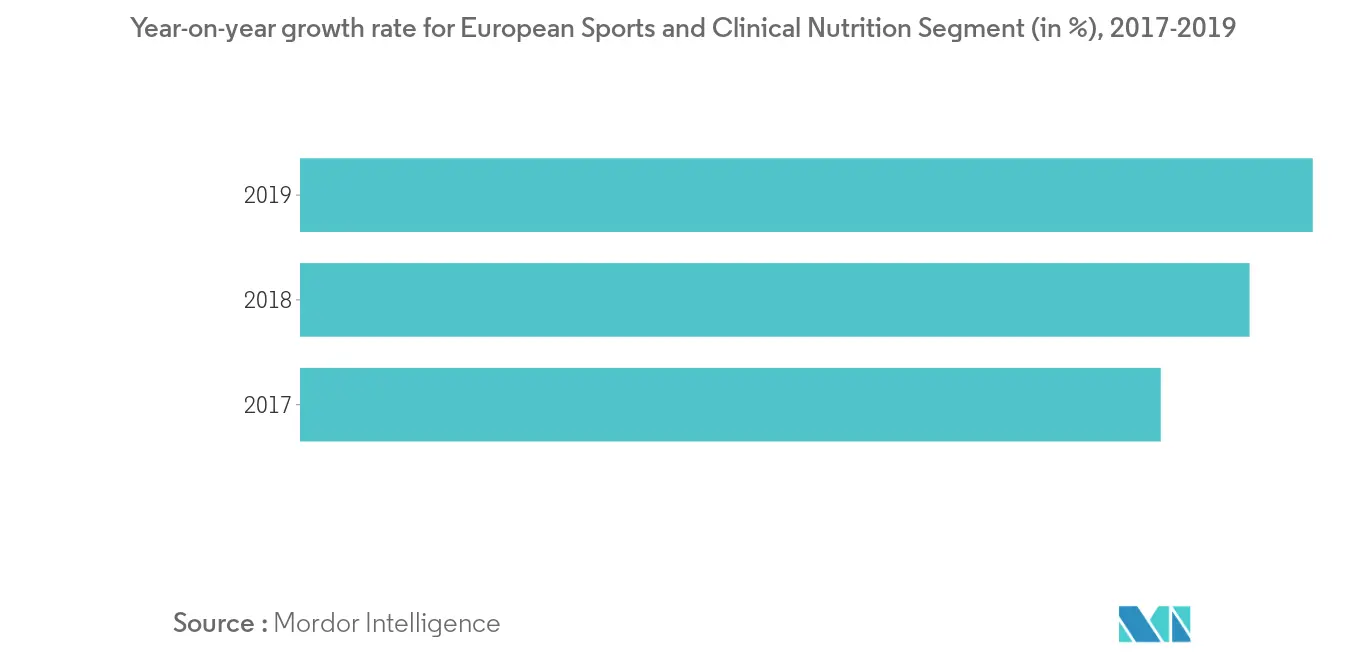Market Trends of Europe Dairy Protein Industry
This section covers the major market trends shaping the Europe Dairy Protein Market according to our research experts:
Increased Production Of Dairy Products Filling The Consumption Gap In Major Countries
European Union has one of the largest dairy markets in terms of volume consumption, where the region is the number one producer of cheese and therefore, the largest producer of whey according to the European Whey Processor association. As of 2016, the EU dairy sector, the dairy farmers and their private or cooperative milk processors, account for about 160 million tones of milk and hence for about 22% of the global milk production. With more than 12,000 milk processing and production sites across Europe, the dairy sector contributes heavily to the food and beverage sector. Germany and Poland are the largest consumers of whey protein in the European Union, and an increasing number of consumers are now including high protein powders, amino acid products, high protein ready-to-drink beverages, and high protein bars into their meals thus pushing the market revenue generation in the dairy ingredients market. Furthermore, the region is also one of the prominent exporters of a large number of dairy products globally. In 2018, the European Union exported about 600,000 tones of whey going to many different countries around the world. Also, in 2016 the EU exported more than 557,000 tones of whey globally. China is the highest importer of EU Whey with 187,306 tonnes imported in 2018.

Rising Demand For “Sportification” From Non-Athletes
The sports nutrition industry is rapidly becoming mainstream which is pushing the market for the dairy protein market. Dairy protein renders the desired nutrition value, especially protein amount to the sports food products thus, contributing towards their increasing usage in various supplication. Dairy protein, especially whey, is well known for its high quality, high absorption, and superior content of amino acids, essential for muscle growth. This factor makes it a popular sports-nutrition ingredient. The use of whey and lactose ingredients, both, in the processed food and nutritional sectors has helped the market to grow. Researches suggest that dairy proteins such as whey protein and milk proteins can also as an anti-aging agent. Moreover, these proteins might also help to decrease stress and reduce cortisol concentration levels. Awareness among the mass to be fit and remain in shape, along with enhancing the body immunity, has lead to significant growth in demand for dairy proteins in urban areas. Furthermore, the consumers, especially millennial consumers, and gym enthusiasts in the region are focusing on increasing strength and enhancing recovery. This factor is providing the ingredient manufacturers the opportunity to introduce high-protein products with multiple benefits, which appeal to the athletes and gym enthusiasts.


